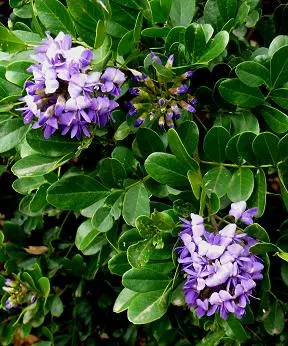Last week I tagged along with a group who were doing a plant list for one of the new properties acquired by San Antonio’s Proposition 1 in northern Bexar County, and yesterday I was with a couple of friends at Government Canyon State Natural Area scouting out a route for a geology field trip. I had looked forward to being outside experiencing a little spring green. Not!
This year early spring is brown… dry brown! All the green is left over winter green: mountain laurel, evergreen sumac, silktassel, juniper, and liveoak. And very little is in bloom.

At least this is a good time to take note of what native plants are the most likely to thrive on very little moisture in our limestone terrain. In both the places we hiked, Texas redbud (Cercis canadensis var. texensis) was the outstanding blooming tree. Redbuds are especially pretty this year because they are packed with blooms before any leaves have emerged.
At Government Canyon, acacias also are in bloom, which made me feel good about this month’s NICE! Plant of the Month. Huisache (Acacia franesiana) trees are thick with golden-yellow flowers on the Upper Cretaceous chalk plain just in front of the Balcones Escarpment. Catclaw (Acacia roemeriana) is blooming white in the draws of the Edwards limestone hills behind the fault.

Agarita (Berbis trifoliolata) is another plant that has survived the severe drought in pretty good shape. Agarita was the first shrub to bloom in our part of the Edwards Plateau this spring.
Of the thousands of Texas mountain laurels (Sophora secundiflora) at the two sites, only a few were blooming. Many of the mountain laurels looked a little shriveled and yellow green. The drought is taking its toll.
What about the wildflowers? Mostly they are still waiting for rains to come. I couldn’t even find any anemones, which usually are among the earliest spring flowers in this area.
The relatively obscure Dutchman’s breeches (Thamnosma texana) is blooming on schedule, but otherwise it is difficult to spot forbs in bloom. On the San Antonio Parks and Recreation property, we saw one flowering slender-stem bitterweed (Tetraneuris saposa), a few prairie fleabanes (Erigern modestus), and a few gray vervains (Verbena canescens).
Maybe the rains promised this week will change the landscape. It would be nice to see some spring green. But now we know the stars of the native-plant landscape plants that can survive without irrigation are Texas redbud, acacias such as huisache and catclaw, argarita, and Texas mountain laurel.

A sad note:
Recently we lost a champion of education about conservation of the ecology of the Texas Hill Country. Margaret Bamberger passed away in her sleep on March 6, 2009, after a long and heroic fight against multiple cancers. Margaret was an equal partner with J. David Bamberger in the creation of the Bamberger Ranch Preserve north of Blanco. She is credited with creating the ranch’s educational programs and giving the ranch its credibility as an educational institution.
On a personal note, I always enjoyed being in the field with Margaret, because she was so enthusiastic about the geology of the land on which she lived. She understood the ecology of the Hill Country from the bedrock up!
